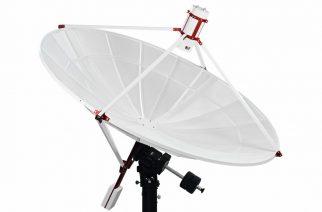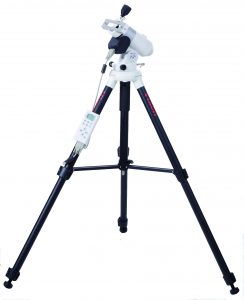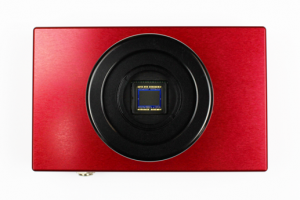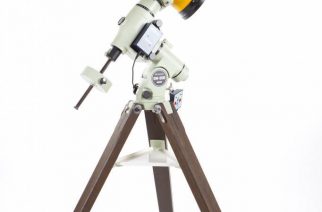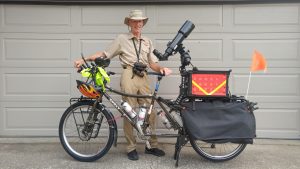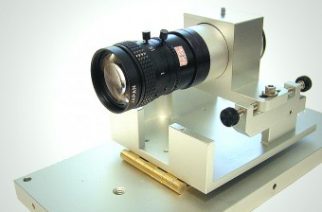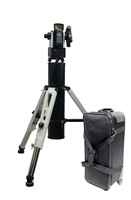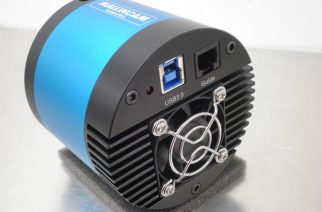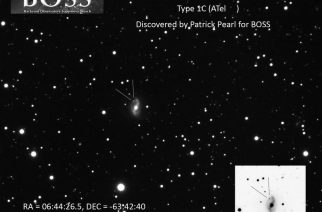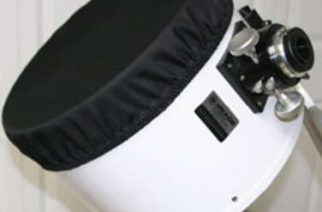PrimaLuceLab offers a unique opportunity to enjoy the cosmos and beyond with the SPIDER230c radio telescope that combines radio technologies with that of amateur astronomy, packaged in a powerful, modular and easy-to-use system. The SPIDER230c radio telescope uses a WEB230-5 antenna – a mesh 2.3-meter diameter parabolic antenna designed to […]
News
Vixen Advanced Polaris Mount
The Vixen Advanced Polaris Mount offers an easy to use, versatile telescope mounting system designed to incorporate functional modules that can be configured to produce a highly-portable system optimized for your particular application. The Vixen Advanced Polaris Mount system is offered in four basic configurations: Alt-AZ, Manual German EQ, Motorized […]
StarSync Tracker Barn Door-Style Wide-Field Tracker
Kansas-based Gary Hug’s StarSync Tracker is a modified barn door-style wide-field tracker with controller and stepper driver. Built by Gary in the USA, the StarSync Tracker utilizes all aluminum and stainless-steel construction, with a solid hinge and bronze bushings. Perfect for DSLR astro imagers on the go, the tracker is […]
Atik Infinity Video Astronomy Camera
The Atik Infinity is Atik’s first camera dedicated to video astronomy. The Infinity is available in either the mono or color version of the Sony ICX825 sensor, embedded with EXview HAD CCD II technology for outstanding sensitivity and Quantum Efficiency at a resolution suited to near real-time viewing. The 6.45-µm […]
Takahashi Epsilon-130D Astrograph
Takahashi Epsilon-130D Astrograph: Takahashi first introduced their Epsilon Series flat-field hyperbolic astrographs in the mid 1980’s with the Epsilon-130 offering the smallest aperture and most portable of the series. The Epsilon optical system features a hyperbolic primary and a digital corrector to produce a flat field image that excels for […]
The Golden Age of Amateur Astronomy
I read Uncle Rod’s post on Amateur Astronomy “What’s Gonna Happen to Us?”, and I walked away with quite different conclusions. First, I want to say I have the utmost respect for all that Uncle Rod has done for amateur astronomy. His work in print and online is sage advice […]
Amateur Astronomy and New Beginnings
As many of you know, I (Gary Parkerson – pictured here) am editor of the magazine Astronomy Technology Today as well as the content on this website. You also many be familiar with the work of Rod Mollise, although you probably know him better as Uncle Rod. No doubt, you’re also aware […]
SBS SM-2 Seeing Monitor
SBS SM-2 Seeing Monitor : Santa Barbara Scientific, a company formed by one of the original founders of SBIG (now part of Diffraction Limited), offers a unique product that allows amateur astronomers to measure the true seeing conditions in the areas they practice astronomical viewing and imaging. The SBS SM-2 […]
iOptron AZ Mount Pro
iOptron calls the iOptron AZ Mount Pro a “level and go mount,” the term it uses to describe its AZ Mount Pro’s simple set-up routine. Using its built-in precision level indicator, you simply level the mount and turn on the power – the computerized alt-azimuth telescope mount takes it from […]
MallinCam SkyRaider DS2.3 Plus
MallinCam is now offering a new lower price of $799US for itsMallinCam SkyRaider DS2.3 Plus video/imager/autoguider. Part of the MallinCam SkyRaider family of astronomical video cameras, the DS2.3 Plus incorporates the Sony Exmor CMOS sensor to deliver the high sensitivity needed for astronomical observation and imaging. The MallinCam SkyRaider DS2.3 […]
BOSS Supernova Search
BOSS Supernova Search: With each new advancement in the technology available to amateur astronomers, the line between amateur and professional – already barely distinguishable – is further blurred. There may be no better example than the feats of a group of amateur astronomers who call their group the Backyard Observatory […]
Astrozap Telescope Dust Covers
Astrozap Telescope Dust Covers: Astronomers can get pretty finicky about cleanliness, especially when it comes to their telescope optics. The reality is that dust is everywhere and it is next to impossible to keep it entirely off a telescope’s optics. However, you don’t have to allow dust to settle on […]


